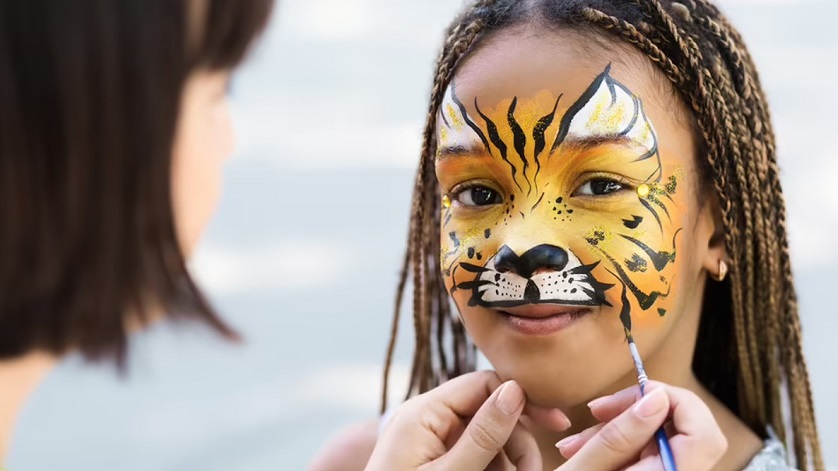Face paint has a unique potential to portray individuality, emotion and imagination, making it ideal for festive celebrations, theatrical performances, sporting events and cultural traditions. It brings colour and character to life in a fun and visually appealing way, with designs ranging from simple butterflies and superheroes to complicated tribal patterns and fantasy creatures. However, getting the ideal one isn’t always a straightforward decision. There are some important factors to take into account when shopping.
Types

Combine art and fun and shop for quality, cosmetic-grade face paint Australia round. When in-store or entering the website of reputable sellers, you will see that there is a wide range of types available. Of course, not all are good ones. The main difference between the options of face paints is the base ingredients. When we talk about base ingredients, we are referring to the ingredients that give the paint its consistency and act as a medium for the pigment. Therefore, some ingredients work as the main element and others function as preservatives, perfumes and so on. The main ones are listed below.
Paraffin Wax
Paraffin wax is a petroleum-based wax that is solid at room temperature but melts at temperatures above 37 degrees Celsius. The great majority of popular face paint brands contain paraffin wax. Paraffin wax face paints often have a clay-like consistency and can be activated with water. Many professional face painters prefer to use paraffin wax-based face paints because they dry rapidly, provide excellent coverage and allow artists to create extremely detailed designs.
Paraffin-based face paints do not bleed, allowing you to draw precise lines with sharp edges. In contrast, some glycerine-based face paints bleed slightly, resulting in a more fuzzy-looking edge. Since the paraffin is derived from petroleum, the ingredient is vegan and no animals are harmed in the production process as opposed to beeswax-based products.
Glycerine Based
Glycerine is a viscous liquid derived from animal or plant sources. The one used for face paints is derived from plants and is therefore vegan. The main difference between glycerine and paraffin wax is that glycerine is softer, but its consistency does not change significantly when exposed to higher temperatures, making it slightly more heat stable than paraffin.
Extremely high temperatures cause it to melt into a cream, whilst overheating causes paraffin to become a sticky marshmallow-like substance. Glycerine-based face paints are particularly useful for producing soft, smooth-looking bases since they are very flexible and pliable, as opposed to paraffin wax, which might feel a little tighter on the skin due to its thickness.
Petrolatum Based
Petrolatum-based paints, often known as grease or oil-based paints, are typically used for clown and theatrical makeup. These paints are extremely thick and can be applied using a makeup sponge. They do not require water to be activated because they are used immediately from the container and sponged onto the skin.
Because they are quite oily, they must be set with a setting powder to prevent transfer when subjected to friction or rubbing; however, once set, they are extremely perspiration- and water-resistant. Most theatre performers and active clowns prefer this type of makeup to a water-activated one because it is sweat-resistant. However, when on the hunt for the best face paint Australia wide, keep in mind that your ability to do detail work here is severely limited.
This requires you to work with grease pencils or crayons or use powder-based paints over the grease makeup since detail brushes do not work well with this type of paint. Removing grease paint is not straightforward, and it usually necessitates the application of cold cream, soap, water or other oil-based makeup removers specialised for oil-based makeup.
Talc
Talc-based face paints are solid at room temperature and can have a clay-like or pressed-dried powder consistency, depending on the additional components included. Talc is a mineral and so considered vegan. The most popular talc-based face paints are dry-pressed powders that are applied with a smoothie blender applicator. They can be applied directly to the skin or over a primer for a more opaque and bright finish. When sealed, they are fairly perspiration- and water-resistant. They can be used as both eye shadow and blush. Some talc-based face paints are creamier than others, depending on the amount of glycerine included in the composition.
Basic Colours for Solid Start

White is the most critical face paint colour in your kit. It can be used for highlights, line work, bases and blending with other colours to create new ones. You should always have some extra white face paint at hand because you will apply it more frequently than any other colour. Black face paint is the second-most significant colour in your face painting set. It will help you draw clean and crisp lines and is quite easy to remove. Colours like blue, green and red as well as yellow and pink are also welcomed. If you’re on a tight budget, consider purchasing palettes rather than full-size colours.











